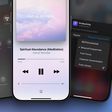Apple today published a new support document outlining steps to try if your Apple Watch's microphone or speaker is not working as expected.

Apple says the steps can also be followed if the Apple Watch speaker's audio is "crackling, distorted, muffled, or intermittent."
The potential solutions listed include updating your Apple Watch to the latest watchOS version, restarting the Apple Watch, un-pairing and re-pairing the Apple Watch to an iPhone, checking whether Silent Mode or Do Not Disturb is turned on, cleaning the Apple Watch's microphone and speaker, and drying the Apple Watch with a microfiber cloth to ensure there is no water in the microphone and speaker areas.
Apple has published the support document just a few days after we reported about a potential Apple Watch Series 10 speaker issue, with some users experiencing quiet or muffled audio after extended use of the device. We cannot guarantee that the document was published in response to the issue, but the timing is certainly suspect.
The support document was spotted by MacRumors contributor Aaron Perris.
Apple has not commented on the speaker complaints, and it is possible that the support document is merely an interim solution while the company internally investigates the matter. If a software issue is identified, it should be fixed in a future watchOS update. If a hardware issue is identified, Apple could launch a service program offering free repairs.
If and when any further information surfaces regarding the potential Apple Watch Series 10 speaker issue, we will be sure to report it.














 Note: MacRumors is an affiliate partner with some of these vendors. When you click a link and make a purchase, we may receive a small payment, which helps us keep the site running.
Note: MacRumors is an affiliate partner with some of these vendors. When you click a link and make a purchase, we may receive a small payment, which helps us keep the site running.

 Note: MacRumors is an affiliate partner with some of these vendors. When you click a link and make a purchase, we may receive a small payment, which helps us keep the site running.
Note: MacRumors is an affiliate partner with some of these vendors. When you click a link and make a purchase, we may receive a small payment, which helps us keep the site running.












